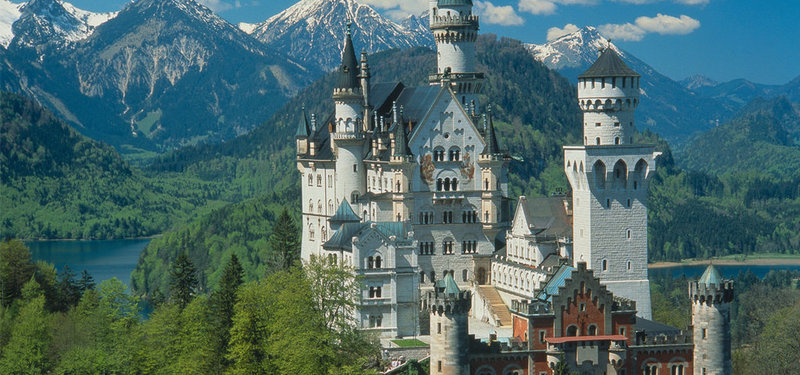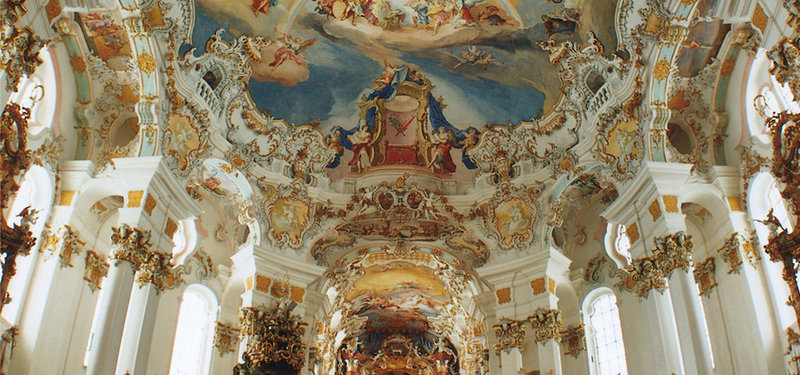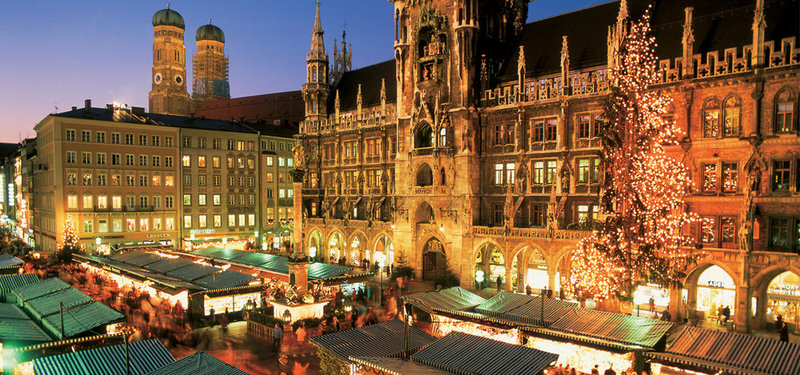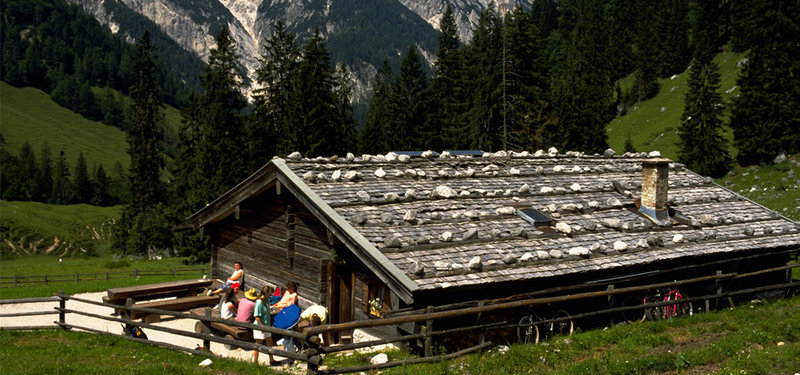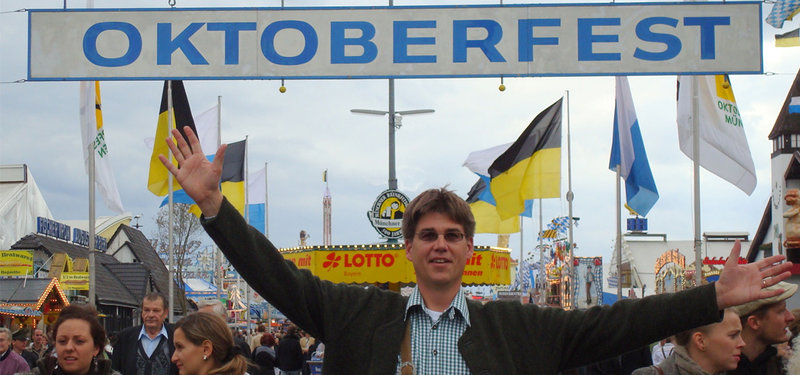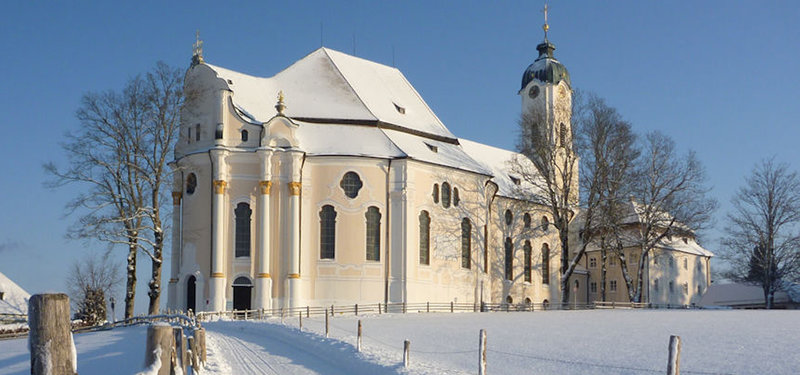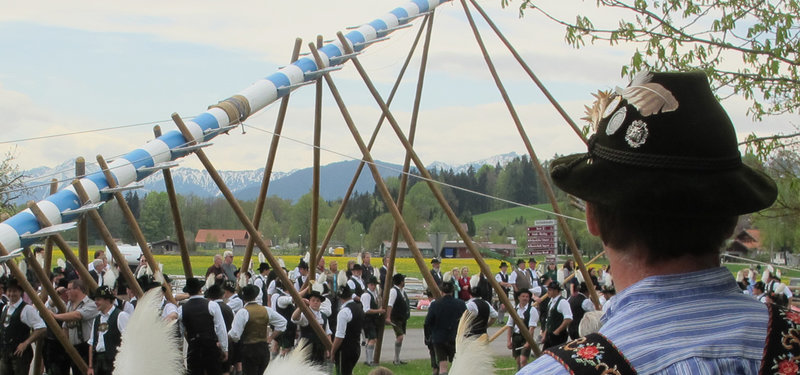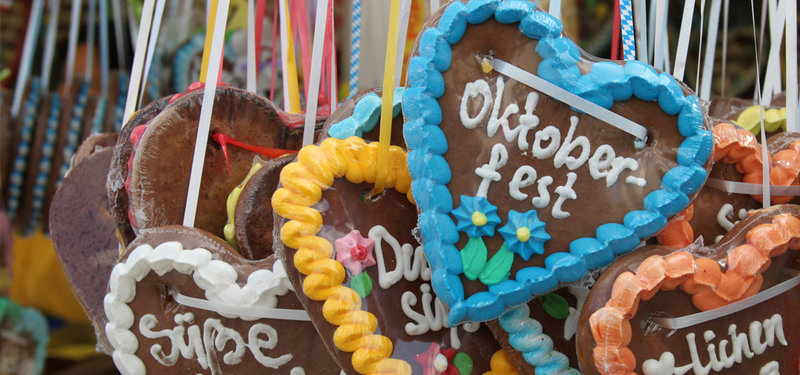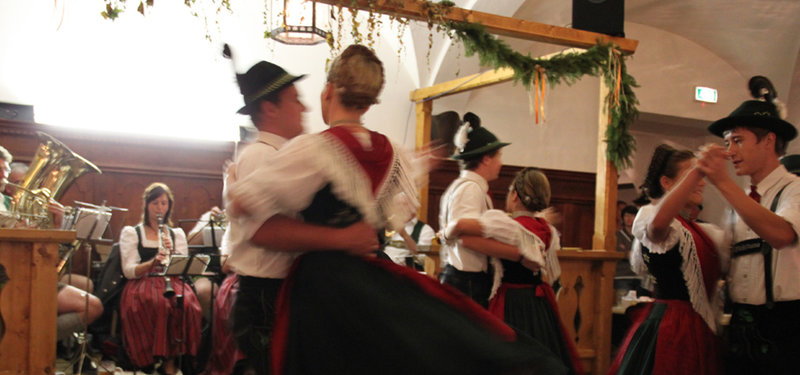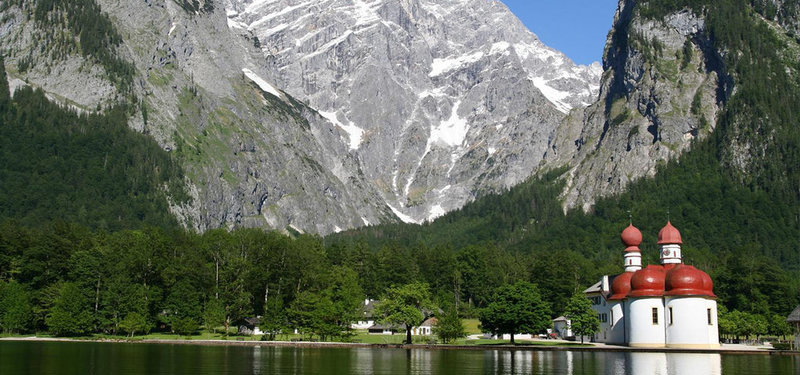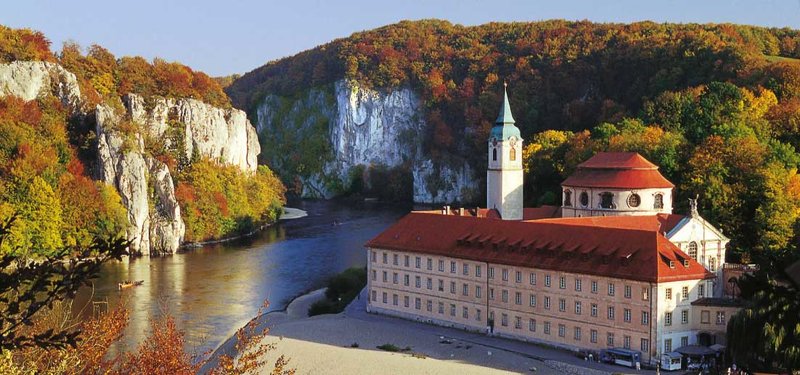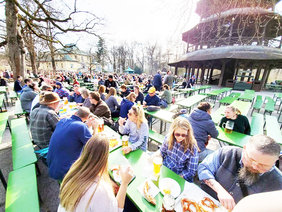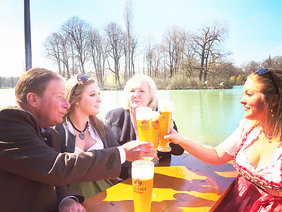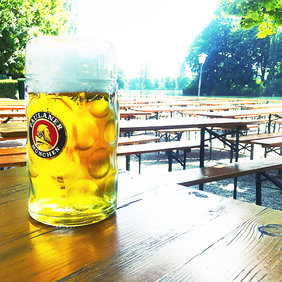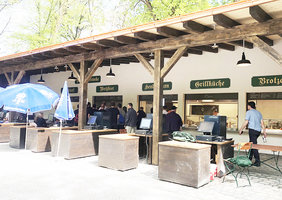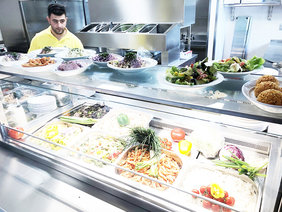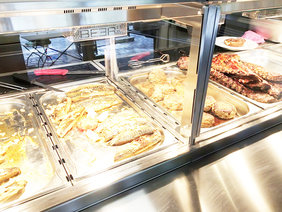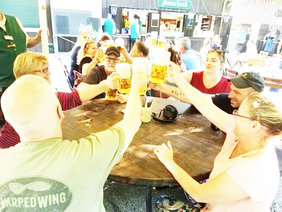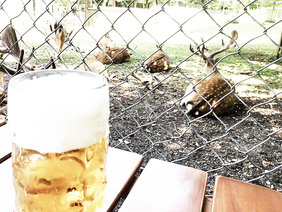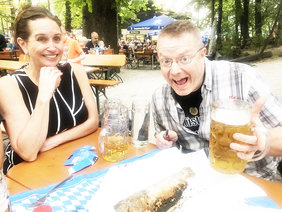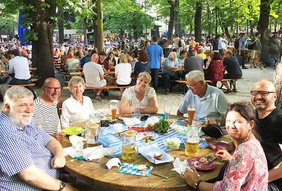What is a beer garden?
It seems obvious, but there are some fine points to what, exactly, constitutes a “Biergarten” in the Bavarian sense of the word.
A „Biergarten“ is an outside area, filled with chestnut trees, where beer is on offer. A true beer garden will allow you to bring your own food, but all drinks – including soda and water, must be purchased on-site. Typically, the beverages are offered at a self-service “Ausschank” and tables are the ubiquitous German portable picnic table with two separate benches. In some beer gardens, locals will also bring their own beer stein.
Many restaurants and pubs will offer outdoor seating and they may refer to their outdoor space as a biergarten, but this is technically a “Wirtsgarten,” if outside food is not allowed.
It is common for the locals to spend many hours in the biergarten. Yes, there is drinking involved, but there is conversation, card playing, or even just newspaper reading going on. Apartments are so small that getting outside to the biergarten is a necessity if you want to be with your buddies. People will spread out a tablecloth and then proceed to unpack all their self-prepared goodies like soft pretzels, Obatzda cheese spread, potato salad, radish, sausage salad, and many other dishes. Others rely on the staff at the beer garden to prepare them something. Most offer a variety of food on offer as well, including in some cases, Steckerlfisch (A complete fish roasted over open coals). For more detail on beer garden food, check out Dorling-Kindersley’s Biergarten Cookbook.
Sitting: Many Biergärten will offer two different seating areas – one self-service and another with table service. There are some simple clues indicating the difference. As a rule, the self-service area will be furnished with long, narrow picnic tables and benches. These can seat up to 10 people. Served areas usually make use of the round or square tables and individual chairs with back rests. If there is a tablecloth, that is a sure sign of table service. While I enjoy the freedom of getting my own beer when I want it, the food is of better quality in the service area.
Lines: The orderly Germans are not good at lines. Chaos reigns with people dashing about. For instance, if you are only grabbing a beer, you can bypass everyone in the food line and step right up. Don’t be rude, but don’t hesitate either!
Deposit: Many beer gardens employ a flatbed truck that rolls around picking up the empties. Some beer gardens charge you a deposit of 1 or 2 Euro for the mug – this is to reward you for returning it to the central collecting area. This does not mean you can keep the mug – that’s still theft and will be treated as such if you walk away with it!
Beer: If you try to order a small ½ beer, sometimes you will be told “come back when you are thirsty!” The 1 liter Maßkrug reigns in the beer garden. If things are not too busy, they may offer you a ½ liter. The Helles is king, but Weißbier is also usually on offer. Be careful not to accidentally grab a Radler – these are usually lined up right next to the Helles.
Other Drinks: You can also get soft drinks like Fanta, Sprite, or Cola or bottled water. Most Biergärten also offer a wine or two, but if you want more selection the served area usually offers more.
History of the Munich Biergärten
The Brauverbot of 1510 compelled brewers to focus on lager beer production. Before this time, top-fermenting beer, ale, was the most common. When brewing between the day of Georgi (April 23) und Michaeli (September 29) came into force, brewers took on the bohemian developed style of bottom-fermented lager beer. (Reichl, 2006). This in turn led to the need to ramp up production in the winter and then store enough beer in cellars to get through the even busier summer season. In 1812 the Bavarian king, Maximillian I, created formal rules for outdoor beer service which were further fine-tuned in 1848 thus creating the Munich Biergärten tradition. (Eymold, 2015)
These cellars had become extremely popular destinations. To keep the beer underground cool, ice was harvested in the wintertime and chestnut trees were planted above ground. The chestnut trees offer thick layers of foliage which can substantially lower the surrounding temperature by evaporating water through their leaves. These trees also provide shade for those sitting in the beer garden or atop the beer cellar. (Seidl, 2011)
Best Munich Beer Gardens
Hirschgarten: Munich’s largest with space for 8,000 features Augustiner Helles from wooden kegs. You can watch the deer and goats frolicking in the adjacent pen and can combine this easily with a visit to Nymphenburg Palace. In this Biergarten, you need to select your own glass Maßkrug, rinse it and get it cooled, and then present it for filling. There is a whole separate area for Weißbier and Dunkles.
Chinesischer Turm: With its 7,000 seats the “Chinese Tower” is the most touristy one since it is within walking distance of Munich’s old town. Features Hofbräu beer and often has live music on the weekends. Here you will be charged a deposit for your mug and given a colored plastic coin that must be returned simultaneously at the station conveniently located on your way to the WC. Be sure to check out the historic merry-go-round by the playground. Combine with a stop at the Seehaus.
Seehaus: Sip on Paulaner beer while watching paddle boats chase the ducks around the lake. Food here is a notch above typical beer garden fare, but also a little more expensive. In the evening, there is a full bar in case you are saddled with a non-beer drinker. Combine with a stop at Chinesischer Turm.
Augustiner Keller: An easy walk from the main train station, Augustiner Edelstoff is served from huge wooden casks. If the weather is good, getting a seat 6 PM – 8 PM can be a challenge! Inside the restaurant, check out the festival hall and take the winding stairs down to see the historical beer cellar where the beer was lagered.
Waldwirtschaft: Known as Munich’s Jazz biergarten, this one is far from downtown. Beer selection is just Spaten Helles and Franzisker Weißbier, but the jazz is the reason people come though their food is also better than in many other Biergärten.
Non-Munich Biergärten
Andechs: Kloster Andechs is an institution that can‘t be missed. Beautiful church and alpine views. Be sure to try the Doppelbock beer with the Schweinshaxe and save room for one of their great desserts like Dampfnudel. Easy to combine with a boat ride on Lake Starnberg and/or a stop at the Tutzinger Biergarten. Or travel via Herrsching and take the boat over to Utting, where you can also visit the Alte Villa biergarten.
Salzburg: Augustiner Zur Mülln opens at 3 PM and you need to get there before 6 PM to get a seat. Historically the same order or monks, but no relation to Augustiner in Munich. The food stalls are not to be missed and, if the weather isn’t good, their indoor beer hall is magnificent. Pick out you own Steinkrug, rinse it to temperature and present it for filling. I like to combine this with a visit to Stieglkeller at mid-day to enjoy the fabulous view over Salzburg.
Bamberg: Spezialkeller offers a phenomenal view over Bamberg and it feels like you can reach out and touch one of the many church steeples. Nice family who runs the place and the Schäuferla (pork shoulder) is excellent.
Bamberg: Wilde Rose is around the corner from the Spezikeller, but still requires a hike. Here you will see many locals show up to enjoy the shady environment and many bring their own steins along. Unusually, they offer a wider selection of beer.
Video Visits
Getting to Englischer Garten and Chinese Tower
Nymphenburg Palace & Hirschgarten Biergarten
References
Eymold, U. (2015). Bier Macht München. München: Süddeutsche Zeitung.
Reichl, D. (2006). Bier Geschichte und Geschichten. Bad Aibling, Bayern, Deutschland: KULTURHISTORISCHER VEREIN FELDMOCHING auf dem Gfild e.V.
Seidl, C. (2011). Beer Gardens. In G. Oliver (Ed.), The Oxford Companion to Beer (pp. 109-111). New York, NY, USA: Oxford University Press.
